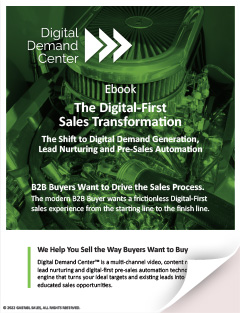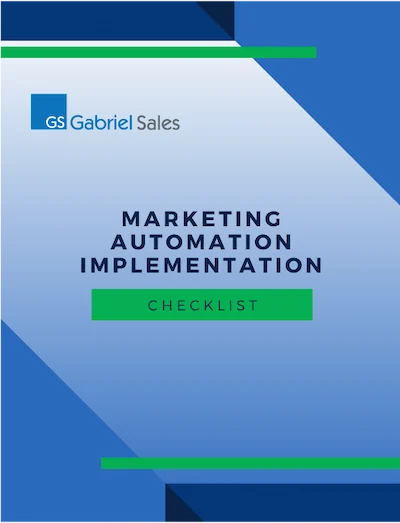B2B Demand Generation, B2B Technology Sales, Professional Services Sales, Strategy and Execution
As a recap of the first blog in this series – we know that the buying process has changed dramatically over the past several years. The buyer, not the seller, now controls the sales process and that process is being “consumerized”. In Part 1 of this series we discussed what you need to consider and be prepared for if you are ready to drive some meaningful cultural change and increased revenue for your organization. Part 2 we will now discuss how your culture, attitude and team dynamics may need to shift to facilitate you customer’s buying process not your sales process.
You need to be prepared for a longer sales cycle. You need to accept that buyers have extended their purchase cycle by 1.5X since 2008 (Sirius-2012) and revenue growth is now going to be both a marathon and a sprint. Your sales team job still needs to be focused on hitting monthly, quarterly and annual sales targets. You need to accept that they may get some deals into the pipe that are going to go through the first several stages of their buying cycle and your sales cycle and then the buyer is going to hit the pause button. You need to have a plan for what happens when this occurs. Does the lead stay with the sale rep or does it go back to your inside sales team? Is there a way to stay in front of them without the sales team wasting time and spinning their wheels?
That your buyers want and expect to be educated first. You may need to embrace the need to develop some new disciplines and commit to content marketing. This is probably the most radical change and your most significant opportunity. Marketing is going to need to take you buyer further through your sales process because that’s what your buyers want. The days when you generate a lead and toss it over to sales are over. And marketers can’t do this alone. They will need the support and contribution of your executives and product specialists as thought leaders. If your marketers can leverage your thought leaders, they can exponentially support your sales team and keep them focused on selling. Marketing can take care of early stage engagement. If you marketer has never been a sales person they may need some help on this front.
Sales and marketing need to work together. The days of working in a silo are over. For a lot of companies this is the biggest hurdle because it’s cultural. Sales doesn’t always care what marketing does (they just want more leads) and marketers don’t think sales appreciates or even understands what they do (and they are often correct). Like any successful team to compete and win, you are going to need to align sales and marketing with the tools, content, and processes you need to support your inside sales reps with the content you need to demonstrate your thought leadership and differentiators. There needs to be mutual respect.
Embrace technology. Because technology can bring the sales and marketing teams together – with the advent of marketing automation platforms, Google Analytics, and CRMs, you can now define and implement a Sales Architecture, Infrastructure, and Technology Platform that provides complete transparency and accountability throughout your entire sales process. Keeping score helps teams to flourish. This isn’t rocket science. Just head out to any Little League or Soccer Field on a Saturday during a game and compare it to what happens during practice. During practice the energy level and focus waxes and wanes. Put them on the field when they are accountable for a score and measured on the results and everything changes and it’s a great deal more fun as well.
You need to budget appropriately. As we mentioned previously, sales is now both a marathon and a sprint. While we appreciate the need and pressure to hit quarterly numbers, don’t expect a process to fall in place that quickly. You need plan on investing in this engine for at least 4 to 6 months until you will start seeing consistent results. As the process becomes imbedded into your culture and your teams align and start firing on all cylinders, revenue will go up and costs of sales will start to decrease. This double gain allows you to take your new revenue and your cost savings to grow the engine producing exponential results.
Summary – The line between sales and marketing is getting blurred
- Your buyer now wants to be educated
- They want access to your thought leadership and your product specialists for deeper education
- Your thought leaders can’t spend time on deals that just want to be educated
- Your buyer does not want to engage with sales until they are educated and ready to buy
- You need to demonstrate you understand their situation and pain before your prospect will engage with sales.
Everyone understands the social contract between salesperson and buyer. The sales person’s job is to sell and the buyer’s job is to buy. Pain, gain, and solution selling are still important but, more and more, rather than having a sales rep get on the phone saying “lets understand your situation”, it’s becoming the job of your inside sales team and your marketers to do this by sharing thought leadership from your product specialists. Pressing the buyer to buy and introducing a sales rep prematurely before they are ready engage may win you a couple of deals in the short term but, it will drive even more deals into your competitors’ arms.
So the question is what does my sales and marketing organization need to look like to create demand for my sales team now that marketing’s job is to take my buyers well beyond creating awareness and driving leads into my sales funnel? Here is our next blog in the series that outlines The Core Competencies I Need From My Demand Generation Team.
If you want to learn more about how Gabriel Sales can apply some of what we have learned for your business specifically, request a complimentary review. If you want to review more information, Download the White Paper for Tactics you can implement now that will jump start your transformation immediately.
Additional Blogs in this Series:
Part 1 – Increasing Your B2B Sales Volume and Revenue – What’s Changed?
Part 2 – What Does Your B2B Sales and Marketing Culture Need to Look Like?
Part 3 – What Core Competencies do I Need From My Marketing and Lead Generation Team?
Part 4 – How Can Marketing Automation Improve My B2B Sales Performance?
Part 5 – Why is Content Marketing is Now Required for Quality B2B Lead Generation?





